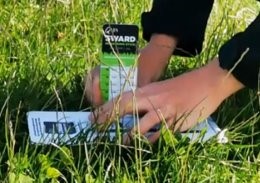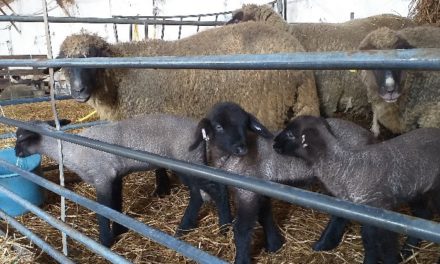This post is also available in:
![]()
![]()
![]()
![]()
![]()
Country: Ireland
Dairy or/and meat sheep: Meat and diary
Level of solution:
|
X |
Knowledge |
|
X |
Practical |
|
|
Just Being Tested |
Aim: To present options for artificially rearing surplus lambs
Description:
- As ewe productivity increases the incidences of multiple births increases.
- Many of these surplus lambs are either:
- cross fostered to single bearing ewes
- sold for cross fostering
- reared as triplets
- artificially reared on milk replacer
- The three main methods of artificially rearing lambs are as follows:
1. Bottle rearing:
- has a low set up cost
- involves feeding three to four times a day
- has a high labour demand
- results in large intakes of milk a few times per day which may lead to stomach upsets
2. Ad lib feeders:
- hold up to 50 litres of milk which is maintained at constant temperature using a thermostat
- can rear 20 to 25 lambs per unit
- require mains electricity to operate
- costs approximately €350
- have limited labour requirement (cleaning, mixing milk, refilling)
- result in reduced stomach upsets as milk is available ad libitum
3. Automated feeders:
- mix milk replacer with warm water as required ensuring a fresh supply of milk at all times
- are plumbed to a water supply and requires mains electricity
- have high set up costs (approx. €3,500)
- can rear up to 250 lambs per unit
- have low labour input as only periodic cleaning is required
Expected benefits:
- Provides a mechanism to rear lambs from large litters.
- Increases profitability from additional lambs.
Prerequisites and/or limits:
- Additional set up costs and labour requirement to rear lambs
Scientific basis:
Ward, SJ., Liste, G., Tinarwo, A. 2011. Attitudes of UK sheep farmers towards fostering methods: A national survey. Small Ruminant Research, 99, 87-92
Gottstein, M. 2017. Strategies for Dealing with Orphan Lambs in High Litter Size Flocks. Proceedings of the Teagasc National sheep conference 2017. The Landmark Hotel, Carrick on Shannon, Co. Leitrim. Pp. 14-18.
Costello. D. 2017. Options for Surplus Lambs in High Litter Size Flocks. Animal and Grassland Research and Innovation Centre, Teagasc, Athenry, Co Galway. https://www.teagasc.ie/publications/2017/options-for-surplus- lambs-in-high-litter-size-flocks.php
Keady and Hanrahan. 2018. Effects of birth type and weight on mortality and performance of artificially reared lambs. Advances in animal biosciences. 9:60
Tips and Tricks:
|
|
Level 1 assessment
| Benefit | |||||||
| Benefit expected | mortality less workload better labor organisation better feed management less stress for the farmer |
||||||
| System | |||||||
| Is the solution suitable for various production systems | Y | ||||||
| If no – for which system | |||||||
| Cost | |||||||
| What are the asset costs | <100 up to €3,500 | ||||||
| What are the maintenance costs | 50-100 | ||||||
| Any limits to its applicability | additional set up costs and labour requirement to artificially rear lambs | ||||||
| Work Load | |||||||
| Farmers | Service provider/tech.-vet-others | ||||||
| How much time is required to prepare and implement the solution | <1 day | ||||||
| How many people is needed to implement the solution? | One | ||||||
| Timing | |||||||
| How long it takes to get results? | Immediate | ||||||
| How long it takes to see an effect on sheep productivity? | Current production period | ||||||
| Equipment/Facility | |||||||
| Farmers | Service provider/technicians-vet-others | ||||||
| What kind of equipment/tool are necessary? | Purchased feeders | ||||||
| Skill/Knowledge-Training (farmer) | |||||||
| Does the solution need any specific skill/knowledge or training? | How to set up and clean feeders | ||||||
| How much time will be required for training | < 1 day | ||||||
| Wider Environment | |||||||
| Is there any particular regulation link to the solution? | No | ||||||
| Does the solution need any particular structure or organisation? | No | ||||||
Level 2 assessment: None available







